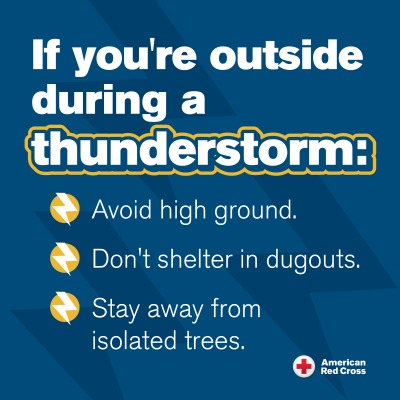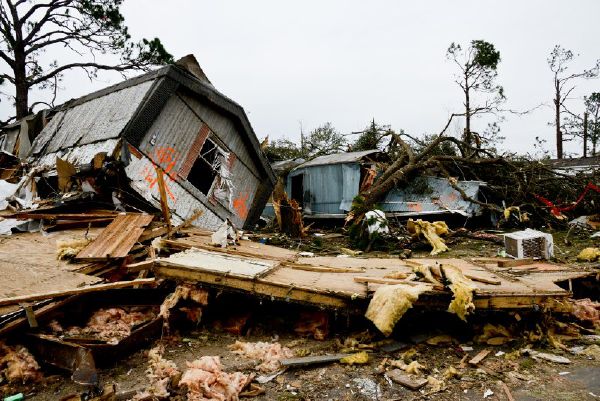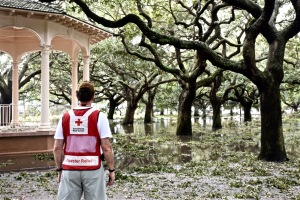By Tim Poe, American Red Cross volunteer.
Early April, a family gathering for an 81st birthday as an early spring storm rattles, patters and howls, not unlike the taps and rumbles at the windows as I write this. A bellowing whoosh and deep crash, a house-shuddering boom. I stand, thinking a tree has fallen, and look out the window to see a black-and-chrome mass fall from the sky, striking cars in a cacophony of shattering glass and bending metal. A family member repeatedly shouts, “What was that?!” I step outside and piece together what has happened. A neighbor’s trampoline, windblown, smashed into and knocked down a portion of fence, rose up, crashed onto the roof, where one of its legs protrudes from the hole it has just made, rose again and plunged onto the cars.
This was the scene last April, turning a birthday celebration into a flurry of activity to ensure everyone was safe, mitigate damage from the compromised roof, assess damage and make plans on how to proceed. Now that spring has returned along with its storms, we must be prepared for whatever they bring, whether high winds, tornadoes, heavy rains, flooding or falling trampolines.
As we have written before, preparation is key. The American Red Cross is responding to an increasing number of disasters and expects this trend will continue. The National Oceanic and Atmospheric Administration also recently reported that Ohio set a record for tornadoes in 2024.
Here are tips for planning and staying safe.
- Practice drills with everyone in your household.
- Contact your local office of emergency management to learn what hazards may affect your community. Sign up for free emergency alerts from your local government. Remember, a WATCH alert means be prepared; a WARNING means take action.
- Get inside a sturdy building, one with walls and a foundation, before a thunderstorm hits. Plan to shelter in the basement or a small, interior, windowless room on the lowest level to provide additional protection from high winds.
- If you are in a mobile, manufactured, trailer home or RV, identify a sturdy building you can access quickly.
- In certain emergencies you may need to travel to safety. Decide where you will go, how to get there and what you will need to take. Make additional plans if assistance or public transportation is needed.
- Include pets in your plans.
- Plan to reconnect with loved ones should you become separated or communications are down. Carry a contact card with important phone numbers. Also consider including a list of medications.
- Plan to stay informed even if the power is out. Backup batteries, devices to charge cell phones and battery-powered or hand-crank radios are helpful.
- Prepare both stay-at home and go kits. The go-kit should have three-day’s worth of critical supplies, while the stay-at-home kit should have two weeks of food and water and a one-month supply of medications/medical supplies.
- Keep personal, financial and medical records in a safe, easily accessible place.
- Make a list of items outside you will need to tie down or put away. (Yes, including trampolines).
- Learn First Aid and CPR.
- Download the Red Cross Emergency App.

More information is available here. As always, please prepare and stay safe, and call on the Red Cross if needed.
Edited by Glenda Bogar, American Red Cross volunteer





